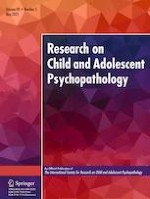02-02-2021
Children’s ADHD Symptoms and Friendship Patterns across a School Year
Gepubliceerd in: Research on Child and Adolescent Psychopathology | Uitgave 5/2021
Log in om toegang te krijgenAbstract
Symptoms of attention-deficit/hyperactivity disorder (ADHD) in elementary school-age children are associated with poor relationships with classroom peers, as indicated by poor social preference, low peer support, and peer victimization. Less is known about how friendship patterns relate to ADHD symptoms, or how friendships may buffer risk for negative peer experiences. Participants were 558 children in 34 classrooms (grades K-5). At the beginning (fall) and end (spring) of an academic year, children completed (a) sociometric interviews to index friendship patterns and social preference, and (b) self-report questionnaires about their support and victimization experiences from classmates. In fall, higher teacher-reported ADHD symptoms were associated with children having more classmates with no friendship ties (non-friends) and who the child nominated but did not receive a nomination in return (unreciprocated friends), and with having fewer classmates with mutual friendship ties (reciprocated friends) and who nominated the child but the child did not nominate in return (unchosen friends). Higher fall ADHD symptoms predicted more non-friend classmates, poorer social preference, and more victimization in the spring, after accounting for the same variables in fall. However, having many reciprocated friends (and to a lesser extent, many unchosen friends) in fall buffered against the trajectory between fall ADHD symptoms and poor peer functioning in spring. By contrast, having many unreciprocated friends in fall exacerbated the trajectory between fall ADHD symptoms and poor peer functioning in spring. Thus, elevated ADHD symptoms are associated with poorer friendship patterns, but reciprocated friendship may protect against negative classroom peer experiences over time.
